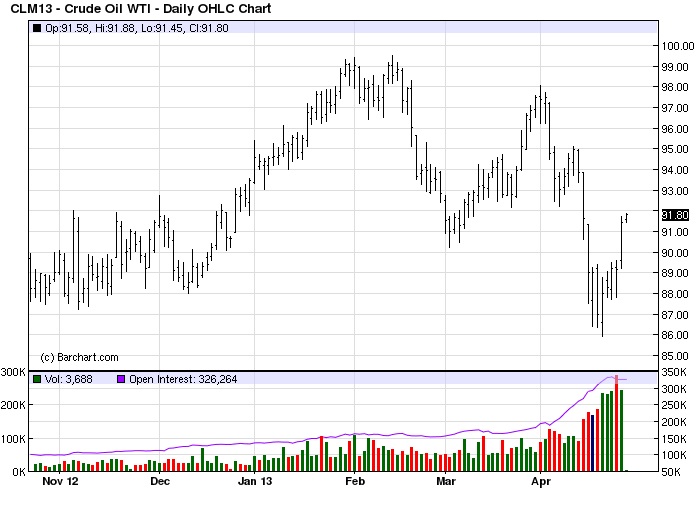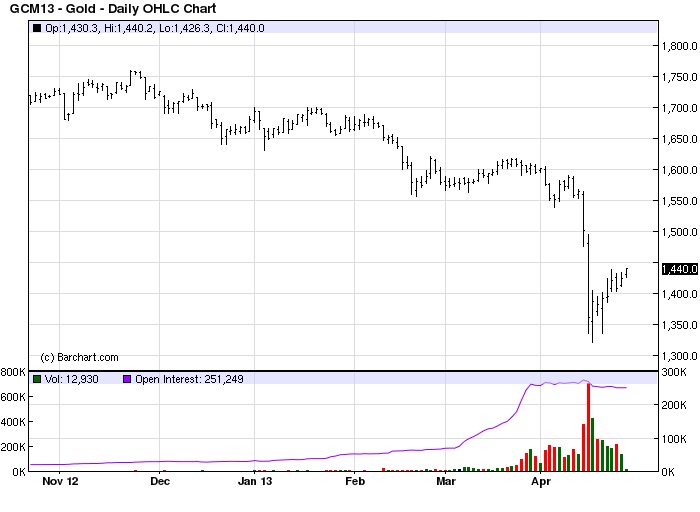Goldman Sachs Puts the Bottom on Gold
One of investors’ biggest fears over the Fed’s monetary stimulus (QE3) is that it will cause runaway inflation. While there are reasons for believing this fear could come to pass in the years following the upcoming 120-year cycle bottom in late 2014, the evidence suggests that inflation is not a concern in the 1-2 years ahead.
It’s remarkable just how quickly those fears over inflation getting out of hand can change into fears over deflation. Just in the last few weeks we’ve seen substantial declines in commodity prices, from corn to oil to gold, and economic forecasters have changed their tune from inflation to deflation. The reason for this is because the 120-year Kress cycle is in its final deflationary phase and is defeating the central banks’ strongest attempts at creating inflation.
Take for instance the featured editorial in the latest issue of Barron’s. Randall Forsyth’s column, entitled “A Deflationary Wave,” says it all. Forsyth described the recent commodities rout as being part of a “global deflationary wave” that has yet to run its course. While I agree with this statement from a longer-term (1-2 year) standpoint, the technical indicators suggest a bottom is nigh at hand for this mini-deflationary wave in the near term.

“The message seems to be,” writes Forsyth, “that there are limits to central banks’ ability to keep boosting commodities, which are barometers of the real economy. And the rocky performance of stocks doesn’t inspire confidence that they can keep the bull market running indefinitely.” Again, this statement may be true in the longer term, but the evidence strongly suggests the Fed’s efforts will prove sufficient to boost equities in the near term.
Besides providing the market with a much needed correction, another thing the commodities sell-off succeeded in doing was relieving the retail economy of some of the excesses from QE3. The recent drop in oil, food and base metals prices will, in the words of one economist, “give consumers more spending power and let central bankers keep at their game longer.” In other words, the mini-deflationary wave that Forsyth wrote about will actually prove beneficial for both consumers and investors as long as the Fed is going hard and heavy with its $85 billion-a-month asset purchases.
Gold
In the previous commentary we discussed the historical accuracy of investment bank Goldman Sachs when it comes to making commodity price predictions, particularly oil and gold. Goldman made a high profile bearish call on gold a few weeks ago, a prediction which proved to be spot on. On Tuesday, Goldman reversed its bearish gold stance in the short term. That’s potentially good news for the gold market, at least in the near term.
According to CNBC, the firm’s commodities research team said the decline in gold was “more rapid than it expected,” and it exited the trade with a potential gain of 10.4 percent, below its original target price of $1,450.

Goldman had previously forecast that gold would close out 2013 at $1,450 per ounce, then take a hit in 2014 with a predicted close of $1,270. Within days of that call, gold fell almost 16 percent to a low of $1,321 an ounce. As CNBC pointed out, “While the bailout of Cyprus did not send gold higher, reports that Cyprus would sell gold to cover its shortfall sent the metal tumbling, as traders bet other European countries might also sell gold to raise cash.”
Goldman said the surprisingly rapid decline was probably accelerated by breaks in “well-flagged technical support levels.” With the investment bank no longer on the short side of gold, the yellow metal has another reason for establishing a low in the coming days and weeks.
Momentum Strategies Report
The stock market recovery is nearly four years old, and investors wonder if it will continue. While many experts have made forecasts for the coming year, few have been as impressive as the Kress cycles in projecting the market’s year-ahead performance since the recovery began.
Each year I publish a forecast for the coming year based on a series of historical rhythms known within Kress cycle theory. Last year’s forecast was remarkably accurate in predicting the pivotal market turns, including the June 1 bottom in the S&P.
Here’s a sampling from last year’s forecast:
“The first five months of 2012 will likely be characterized by greater than average volatility....This will create a level of choppiness to coincide, if not exacerbate, the market’s underlying predisposition to volatility owing to the euro zone debt crisis…the May-June 2006 stock market slide could be repeated in May-June 2012. Our short-term trading discipline should allow us to navigate this volatility and there should be at least two worthwhile trading opportunities between [January] and the scheduled major weekly cycle around the start of June 2012. From there, the stock market should experience what amounts to the final bull market leg of the current 120-year cycle, which is scheduled to bottom in October 2014.
“Keeping in mind that like snowflakes, no two markets are exactly alike, the Kress cycle echo analysis for 2012 tells us to expect a final upswing for stocks in the second half of the year with the first half of 2012 likely to be more favorably to the bears, especially if events in Europe are allowed to get out of hand.”
This is your opportunity to find out what the Kress cycles are telling us to expect for 2013. Subscribe to the Momentum Strategies Report now and receive as my compliments to you the 2013 Forecast issue.
In addition to that you’ll also receive the MSR newsletter emailed to you each Monday, Wednesday and Friday. MSR provides reliable forecasts and analysis of U.S. and global markets based on internal momentum, cyclical and technical factors. Low-risk stock and ETF recommendations are also made based on my proprietary system of selection. Specific entry and exit instructions are also given for each recommendation.
[For the complete 2013 Kress cycle forecast for the U.S. stock market and the latest newsletters, subscribe to the Momentum Strategies Report at the link below.]
http://www.clifdroke.com/subscribe_msr.mgi
Clif Droke is the editor of the three times weekly Momentum Strategies Report newsletter, published since 1997, which covers U.S. equity markets and various stock sectors, natural resources, money supply and bank credit trends, the dollar and the U.S. economy. The forecasts are made using a unique proprietary blend of analytical methods involving cycles, internal momentum and moving average systems, as well as investor sentiment. He is also the author of numerous books, including most recently “2014: America’s Date With Destiny.” For more information visitwww.clifdroke.com
















